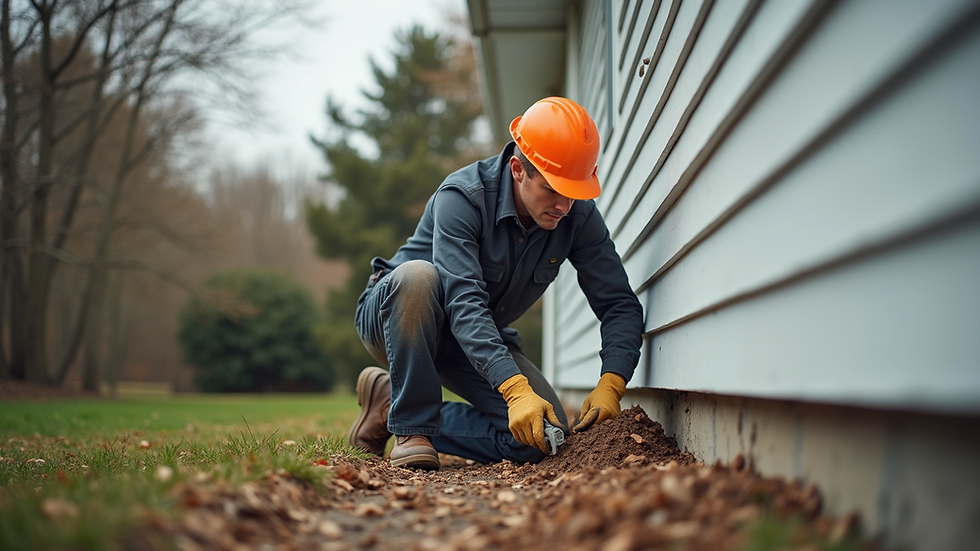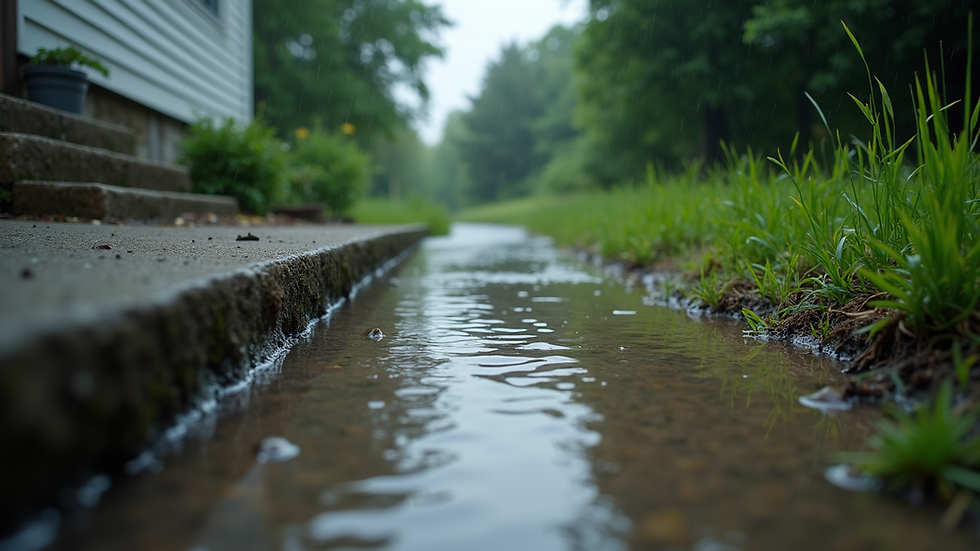Signs Your Home Might Need Foundation Repairs
- Jennifer Pettinato
- Sep 15
- 3 min read
Your home's foundation is its most critical structural element. It supports the entire building and ensures stability. Over time, foundations can develop problems due to soil movement, water damage, or natural wear and tear. Recognizing the early signs that your home might need foundation repairs can save you from costly damage and maintain your home's safety and value.
Common Signs Indicating Foundation Problems
Foundation issues often start subtly but worsen if ignored. Here are some common signs to watch for:
Cracks in Walls and Floors
One of the most noticeable signs of foundation problems is cracks appearing in your walls or floors. These cracks can vary in size and shape:
Vertical cracks are usually less serious but still worth monitoring.
Horizontal cracks or stair-step cracks in brickwork often indicate more severe foundation movement.
Cracks wider than 1/4 inch should be inspected by a professional.
If you notice cracks near windows, doors, or corners of rooms, it could mean your foundation is shifting.

Doors and Windows That Stick or Don’t Close Properly
When your foundation shifts, it can cause door and window frames to become misaligned. This misalignment results in:
Doors that stick or jam when opening or closing.
Windows that are difficult to open or close.
Gaps around doors and windows letting in drafts.
If you suddenly experience these issues, it’s a good idea to check your foundation.
How Foundation Repairs Can Protect Your Home
Ignoring foundation problems can lead to serious damage, including structural instability and water intrusion. Timely foundation repairs can:
Prevent further cracking and damage.
Maintain the value of your home.
Improve safety for your family.
Avoid costly repairs down the line.
If you suspect foundation issues, consult a professional to assess the situation. They can recommend the best course of action, whether it’s minor patching or more extensive underpinning.

Uneven or Sloping Floors as a Warning Sign
Another clear indicator of foundation trouble is uneven or sloping floors. You might notice:
Floors that feel uneven or slant in certain areas.
Furniture that rocks or doesn’t sit level.
Gaps between the floor and baseboards.
These symptoms suggest that the foundation beneath your home is settling unevenly. This can be caused by soil erosion, poor drainage, or changes in moisture levels around your home.
Water Damage and Drainage Issues Affecting the Foundation
Water is one of the biggest enemies of a stable foundation. Poor drainage or plumbing leaks can cause soil to expand or contract, leading to foundation movement. Signs to watch for include:
Water pooling near the foundation after rain.
Damp or wet basement walls.
Mold or mildew growth in the basement or crawl space.
Soil erosion around the foundation perimeter.
Improving drainage around your home and fixing leaks promptly can help protect your foundation from damage.

When to Call a Professional for Foundation Repairs
If you notice any of the signs mentioned above, it’s important to act quickly. A professional foundation contractor can:
Conduct a thorough inspection.
Identify the root cause of the problem.
Provide a detailed repair plan.
Use specialized equipment and techniques to stabilize your foundation.
Remember, early intervention can save you money and prevent more serious damage. For trusted and reliable Foundation Repairs, reach out to experienced professionals who can assess and fix your foundation issues effectively.
Maintaining Your Foundation for Long-Term Stability
After repairs, maintaining your foundation is key to preventing future problems. Here are some practical tips:
Ensure proper drainage by cleaning gutters and downspouts regularly.
Grade the soil around your home to slope away from the foundation.
Avoid planting large trees or shrubs too close to the house.
Monitor your home for new cracks or signs of movement.
Schedule regular inspections, especially if you live in an area prone to soil movement.
By taking these steps, you can protect your investment and enjoy a safe, stable home for years to come.




Comments